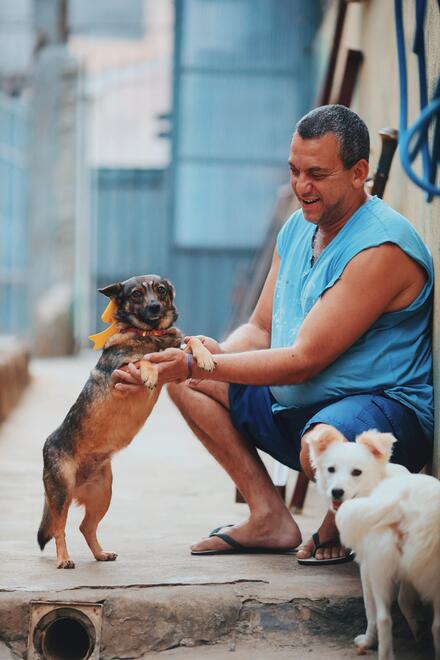Taking action: Communities driving rabies elimination

With all the talk about high-level initiatives like the development of the Global Strategic Plan and the creation of national plans in different countries, we sometimes seem to miss the actions that are taking place daily on the ground, in the communities where rabies is present. What is happening in your local municipality or village to eliminate rabies? In many cases, there are individuals, local NGOs, private clinics, or local governments that are taking action and making a difference. These champions are often siloed, with a focus solely on protecting their own community – primarily due to limited support and capacity, meaning that they are only capable of helping their own community. Unfortunately, this results in these champions fighting a ceaseless battle against the disease, because as they move closer to achieving rabies elimination through dog vaccination and (in many cases) humane dog population management, the disease simply re-enters the community from an outside source. While these champions are critical to driving elimination, they lack the support and cohesion to achieve a sustainable and lasting impact. These champions are often not included in the ‘bigger picture’ in terms of how their efforts align with the National Strategy or the efforts of others in the same country.
The issue is clear, but what is GARC doing about it?
With our many years’ worth of experience in engaging with national governments as well as with local champions and local governments around the world, GARC recognized these challenges and how they are hampering rabies elimination efforts. There is often conflict between local NGOs and local government working in a community – while the ultimate goal may be the same, the process to achieving that goal often differs. With the successes of the development of the Global Strategic Plan and the continued implementation of the SARE tool to help guide national strategies and planning, GARC has now committed to focusing on proactively supporting communities that operationalize rabies elimination.
The crux of GARCs work will be two-fold. The first will focus on supporting these community champions with standardized tools, expert advice, guidance, recommendations and resources that align with international recommendations and standards. This will not only help to improve the efficiency and quality of the work being done by these champions, but will help to align efforts among different champions working in the same geographic regions – meaning that they are capable of working together and synchronizing their efforts, rather than duplicating them. Furthermore, the efforts and actions of these community champions will become more widely known and understood, not only helping the organizations themselves, but also helping to prevent the duplication of efforts.
Secondly, the standardization of approaches will help to align the efforts of these community champions with the National Strategic Plans developed at the national level. This means that the efforts of these champions will directly complement the aims and goals set out by the national government in their strategy. By aligning with the ‘bigger picture’ of the national strategic plan, it becomes feasible to eliminate the disease entirely, as efforts can be better coordinated and roles and responsibilities shared among the different stakeholders working to eliminate the disease.
GARC will work tirelessly to support the efforts of these local champions, the local governments, and national governments to ensure that efforts are cohesive and collaborative, rather than being scattered and duplicative. We aim to equip all stakeholders with the tools, resources, expertise and (most importantly) the collaboration needed to eliminate rabies.
If you are looking for our support with tools and resources, please contact us. We would also appreciate any donation to support our efforts to drive rabies elimination globally.
Article contributed by: Dr Terence Scott (GARC)